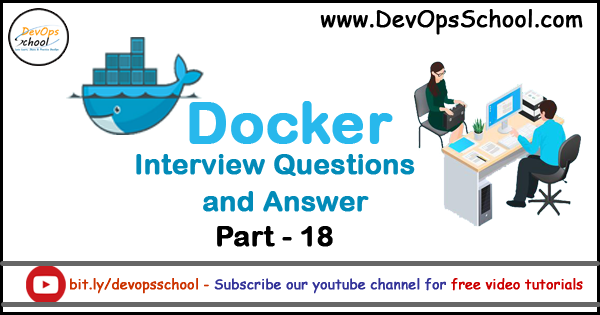
If you want to perform maintenance on a node, to what availability should you change it?
- Ready
- Down
- Drain (Ans)
- Pause
- Active
Assuming you have a stack called APIS, what is the equivalent of docker service ps for stacks?
- docker stack deploy
- docker stack ls
- docker stack ps APIS (Ans)
- docker stack services APIS
When a service is updated that requires a change in the running container, what happens to the corresponding task?
- The existing task is kept and its metadata is updated.
- A new task is also created. (Ans)
- The existing task is kept.
What happens when a new node is attached to the cluster that matches the constraints of a pending replicated service?
- The pending task for the service will be assigned to the new node and a container will be started. (Ans)
- The existing containers for the service will be rebalanced so that a fair share are placed onto the new node.
- A new task will be allocated to the new node for the global service.
- Nothing will run on the new node unless you change the service.
If you don’t want a service to run, but you don’t want to remove it, what’s the safest thing to do?
- Add constraints that aren’t fulfilled.
- Scale it to zero. (Ans)
- Manually mark it pending.
In the “Manager Status” column in the output of docker node ls, what shows for worker nodes?
- Worker
- Nothing (Ans)
- Leader
- Reachable
Which service mode puts a task and a container on each node in the cluster?
- Global (Ans)
- Per Node
- Replicated
Which of the following would you use to stop a health check that’s running for a long time?
- timeout (Ans)
- interval
- CMD
- retries
Which node role maintains the state of the cluster?
- Manager (Ans)
- Replica
- Slave
- Worker
Which service mode allows you to arbitrarily scale your service?
- Replicated (Ans)
- Global
- Per Node
If you want to convert a manager node into a worker node, what do you use?
- docker node promote
- docker node demote (Ans)
- docker swarm manager
- docker swarm worker
- docker node rm
How are Docker and rkt container images structured on disk?
- Each container has access to the host filesystem for common files and then a special directory for apps unique to the container.
- Images are typically split into readonly layers that can be shared between containers. (Ans)
- Each container has its own extracted, isolated copy of the filesystem from an image.
- Images are extracted into a readonly directory that can be shared between containers.
What is the net effect of a separate mount namespace? Each process can have an entirely separate __ .
- ipc
- network stack
- filesystem (Ans)
- hostname
Virtual Memory is similar to which of the following?
- Capabilities
- AppArmor
- SELinux
- Namespaces (Ans)
- Control Groups
Why is networking a concern with containers?
- Because container networking is a new frontier and is different than how you network VMs and physical machines
- Because you have to use port forwarding to share the host’s physical network adapter
- Because you don’t want applications to have port conflicts
- Because each container usually has its own network namespace that needs configuring (Ans)
- All of these
What can you use to create persistent storage in a container?
- Volume (Ans)
- Share the container host’s (root) mount namespace
- Root file system
- Image layers
What is one reason for a top Container Layer added to the underlying image layers when creating the filesystem for a container?
- Easily provide a filesystem for containers from a pre-built image extracted into the top container layer
- Easily create a new image by snapshotting the top container layer (Ans)
- Easily configure the networking stack for a container via the top container layer
What is a host or container host?
- A process running in the root namespaces on a system (Ans)
- A process running in a namespace labeled “host”
- A process running outside of all namespaces
Why do you use mount namespaces?
- To isolate networking and avoid issues with port conflicts
- To isolate hostnames to make it appear as if a process is running on a separate machine
- To isolate the list of processes with which a process can interact
- To isolate the filesystem and only provide files that a single application needs (Ans)
What cluster component helps you find the IP address of another application?
- Service Discovery (Ans)
- Provisioner
- Scheduler
- Persistent Storage
- Apache Lucene Query Example - April 8, 2024
- Google Cloud: Step by Step Tutorials for setting up Multi-cluster Ingress (MCI) - April 7, 2024
- What is Multi-cluster Ingress (MCI) - April 7, 2024

